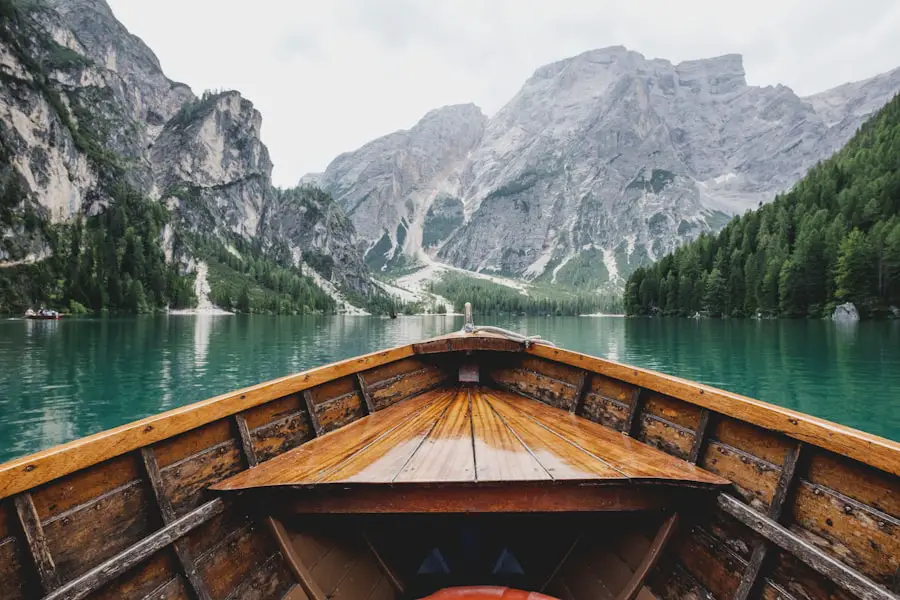The South Pacific is a vast and enchanting region that encompasses numerous islands and archipelagos, each with its own unique culture, geography, and biodiversity. Stretching from the eastern coast of Australia to the shores of South America, this area is characterized by its stunning landscapes, ranging from lush rainforests and volcanic mountains to pristine beaches and coral reefs. The South Pacific is home to a diverse array of cultures, languages, and traditions, with over 1,000 distinct islands that make up the region.
Countries such as Fiji, Samoa, Tonga, and French Polynesia are just a few examples of the rich tapestry of life found in this part of the world. The allure of the South Pacific lies not only in its breathtaking natural beauty but also in its vibrant cultural heritage. The indigenous peoples of the islands have a deep connection to their land and sea, which is reflected in their art, music, and traditional practices.
The region’s history is marked by exploration, colonization, and the blending of cultures, resulting in a unique fusion that continues to evolve today. As travelers seek out new experiences and adventures, the South Pacific stands out as a destination that offers both relaxation and exploration, making it a coveted spot for those looking to escape the hustle and bustle of modern life.
Key Takeaways
- The South Pacific is a diverse region consisting of thousands of islands, each with its own unique culture and natural beauty.
- Summer in the South Pacific is the perfect time for beach activities, water sports, and exploring the vibrant marine life.
- Autumn in the South Pacific brings milder temperatures and is a great time for hiking, birdwatching, and cultural festivals.
- Winter in the South Pacific is the ideal time for whale watching, diving with manta rays, and experiencing traditional ceremonies and rituals.
- Spring in the South Pacific is a time of blooming flowers, lush landscapes, and lively music and dance festivals.
Summer in the South Pacific
Summer in the South Pacific typically spans from December to February, coinciding with the region’s warmest months. During this time, temperatures can soar into the high 80s Fahrenheit (around 30 degrees Celsius), creating an inviting atmosphere for beachgoers and outdoor enthusiasts alike. The long days filled with sunshine provide ample opportunities for water activities such as snorkeling, diving, and surfing.
The coral reefs surrounding many islands come alive during this season, attracting marine life and offering vibrant underwater experiences for those willing to explore. However, summer also marks the beginning of the wet season in some areas, particularly in places like Fiji and Samoa. This means that while sunny days are abundant, there can also be sudden rain showers and tropical storms.
Travelers should be prepared for fluctuating weather conditions and consider planning their activities accordingly. Despite the potential for rain, summer remains a popular time for visitors due to the festive atmosphere that permeates many islands. Beach parties, cultural events, and outdoor markets flourish during this season, allowing travelers to immerse themselves in local traditions while enjoying the warm climate.
Autumn in the South Pacific

Autumn in the South Pacific occurs from March to May and is often regarded as one of the most pleasant times to visit the region. As summer transitions into autumn, temperatures begin to cool slightly, providing a comfortable climate for exploration. The humidity levels drop, making outdoor activities more enjoyable.
This season is particularly favorable for hiking and trekking through the lush landscapes that characterize many islands. Trails that wind through rainforests or along coastal cliffs offer breathtaking views and opportunities to encounter unique flora and fauna. In addition to favorable weather conditions, autumn is also a time when many islands celebrate their agricultural bounty.
Harvest festivals are common during this season, showcasing local produce such as taro, yams, and tropical fruits. These events provide an excellent opportunity for travelers to engage with local communities and learn about traditional farming practices. Visitors can participate in cooking classes or food tours that highlight regional cuisine, allowing them to savor the flavors of the South Pacific while gaining insight into its culinary heritage.
Winter in the South Pacific
| Country | Average Winter Temperature (°C) | Winter Precipitation (mm) |
|---|---|---|
| New Zealand | 10 | 150 |
| Australia | 20 | 200 |
| Fiji | 25 | 300 |
Winter in the South Pacific runs from June to August and is characterized by cooler temperatures and lower humidity levels. While many regions experience winter weather with snow and cold temperatures, the South Pacific offers a milder alternative that attracts travelers seeking warmth during the colder months elsewhere. Average temperatures during this season range from the mid-70s Fahrenheit (around 24 degrees Celsius) to low 80s Fahrenheit (approximately 27 degrees Celsius), making it an ideal time for beach activities and outdoor adventures.
Despite being winter, this season is also known for its dry weather patterns in many areas, particularly in places like Tahiti and Bora Bora. The clear skies and calm seas create perfect conditions for sailing, fishing, and diving. Marine life is often more visible during this time as well, with opportunities to spot dolphins and even migrating whales off the coasts of certain islands.
Winter also brings a sense of tranquility to the region as tourist crowds tend to thin out compared to summer months. This allows for a more intimate experience with nature and local culture.
Spring in the South Pacific
Spring in the South Pacific spans from September to November and is marked by a gradual warming trend as the region transitions back into summer. This season is often celebrated for its vibrant blooms and lush landscapes as flora awakens from the cooler months. Many islands experience an explosion of color as flowers bloom and trees bear fruit, creating picturesque settings for visitors exploring nature trails or relaxing on beaches.
Spring is also a time of renewal for local communities as they prepare for various cultural events and festivals that celebrate their heritage. Traditional dances, music performances, and art exhibitions often take place during this season, providing travelers with an opportunity to engage with local customs and traditions. Additionally, spring is an excellent time for wildlife enthusiasts to visit as migratory birds return to the region, offering birdwatching opportunities on many islands.
The combination of pleasant weather, natural beauty, and cultural vibrancy makes spring an appealing time for travelers seeking a well-rounded experience in the South Pacific.
Events and Festivals in the South Pacific

The South Pacific is renowned for its rich cultural tapestry, which is vividly expressed through various events and festivals held throughout the year. These celebrations often reflect the unique traditions of each island nation while fostering a sense of community among locals and visitors alike. One notable event is Fiji’s Hibiscus Festival held annually in Suva during August.
This festival showcases Fijian culture through parades featuring traditional costumes, music performances, dance competitions, and culinary delights that highlight local cuisine. In Samoa, the Teuila Festival takes place every September and serves as a celebration of Samoan culture and heritage. This vibrant event features traditional dance performances known as siva, showcasing both male and female dancers adorned in colorful attire.
Visitors can also enjoy local crafts, food stalls offering traditional dishes like palusami (taro leaves filled with coconut cream), and even participate in workshops that teach traditional skills such as weaving or tattooing. Another significant event is Tahiti’s Heiva I Tahiti festival held every July. This month-long celebration honors Polynesian culture through dance competitions known as ‘ori tahiti (traditional Tahitian dance), singing contests featuring traditional songs called ‘olelo tahiti (Tahitian language), and various sporting events such as outrigger canoe races.
The Heiva festival attracts participants from across French Polynesia who come together to showcase their talents while celebrating their shared heritage.
Tips for Traveling to the South Pacific
Traveling to the South Pacific requires careful planning to ensure an enjoyable experience amidst its diverse offerings. One essential tip is to research specific islands or countries before embarking on your journey since each destination has its own unique characteristics regarding culture, climate, activities available, and travel logistics. For instance, while Fiji may be known for its luxurious resorts and vibrant nightlife options on Denarau Island or Nadi Bay area; other islands like Taveuni offer stunning natural beauty with waterfalls and hiking trails.
Another important consideration is timing your visit according to seasonal weather patterns. While summer may seem appealing due to warm temperatures; it’s crucial to be aware of potential tropical storms that can occur during this period. Conversely, visiting during winter months may provide more stable weather conditions but could also mean fewer cultural events taking place compared to other seasons.
Travelers should also familiarize themselves with local customs before arriving at their destination; understanding cultural norms can enhance interactions with locals while showing respect for traditions practiced within communities. For example; when visiting villages in Fiji or Samoa it’s customary to dress modestly especially when entering sacred sites or participating in ceremonies.
The South Pacific stands as a captivating region filled with diverse cultures, stunning landscapes, and vibrant traditions that beckon travelers from around the globe. Each season offers its own unique charm—whether it’s basking under summer sun or enjoying autumn harvest festivals—making it an ideal destination year-round. With numerous events celebrating local heritage alongside breathtaking natural beauty; visitors are sure to find something that resonates deeply within them during their journey through this enchanting part of our world.
FAQs
What is the best time to travel to the South Pacific?
The best time to travel to the South Pacific is during the dry season, which typically runs from May to October. This period offers the most favorable weather conditions with less rainfall and lower humidity.
What are the weather conditions like in the South Pacific during the best time to travel?
During the dry season, the weather in the South Pacific is generally warm and sunny, with temperatures ranging from 75°F to 85°F (24°C to 29°C). There is also less chance of encountering tropical storms or cyclones during this time.
Are there any specific events or festivals to consider when planning a trip to the South Pacific?
The South Pacific is known for its vibrant cultural events and festivals, such as the Heiva Festival in Tahiti and the Merrie Monarch Festival in Hawaii. These events often take place during the dry season, making it an ideal time to experience the local culture and traditions.
What are the popular activities to do in the South Pacific during the best time to travel?
Popular activities in the South Pacific during the dry season include snorkeling, scuba diving, surfing, hiking, and exploring the region’s stunning natural landscapes and marine life. The favorable weather conditions make it an ideal time for outdoor adventures and water-based activities.
